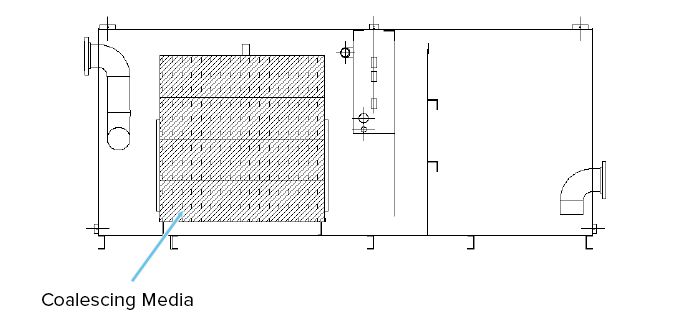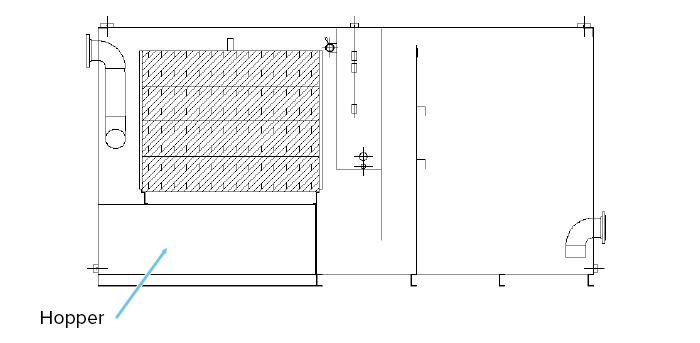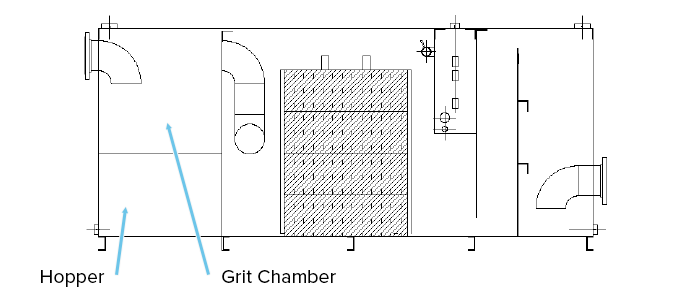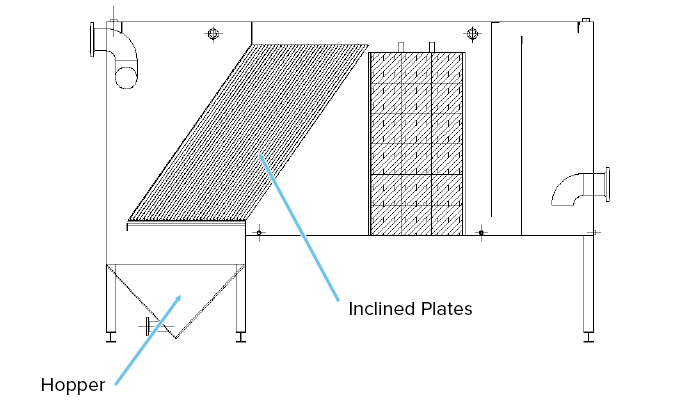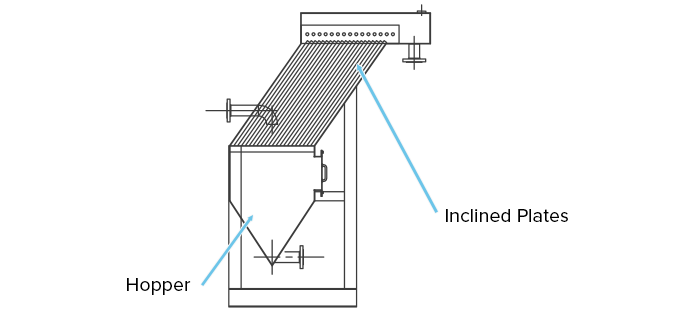How to Choose the Right Separator
Above Ground Separators & Clarifiers
Above ground separators are most often used for separating oil and solids, since they are easier to maintain than in-line units. Above ground oil water separators are ideal for most applications, except for spill containment or stormwater runoff.
Liquid to liquid separation with trace amounts of solids
- OIL: free and dispersed (non-emulsified)
- SOLIDS: trace amount of settleable solids
Liquid to liquid separation with light amount of solids
- OIL: free and dispersed (non-emulsified)
- SOLIDS: light amount of settleable and suspended solids
Liquid to liquid separation with higher amount of solids
- OIL: free and dispersed (non-emulsified)
- SOLIDS: high concentration of settleable solids • low concentration of suspended solids
Liquid to liquid separation with heavy oil and high amount of solids
- OIL: heavy concentration of free and dispersed (non-emulsified)
- SOLIDS: high concentration of settleable solids and suspended solids
Water with heavy amount of suspended solids
- OIL: zero or trace amount of free and dispersed (non-emulsified)
- SOLIDS: heavy concentration of suspended solids
Below Ground Separators
You would want to use a below ground oil water separator for spill containment, stormwater runoff, vehicle maintenance and washing applications, and any application where an in-line separator is required.
In-line separation with solids
- OIL: free and dispersed (non-emulsified)
- SOLIDS: light to heavy amount of settleable solids

